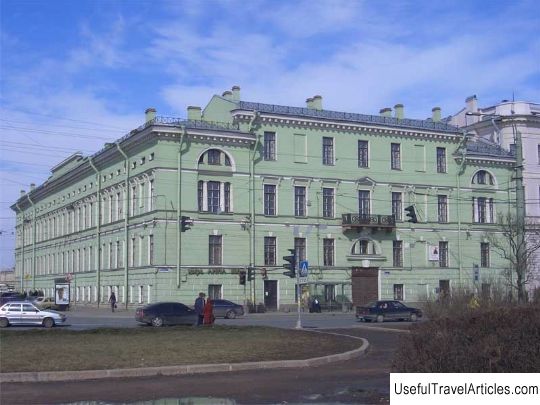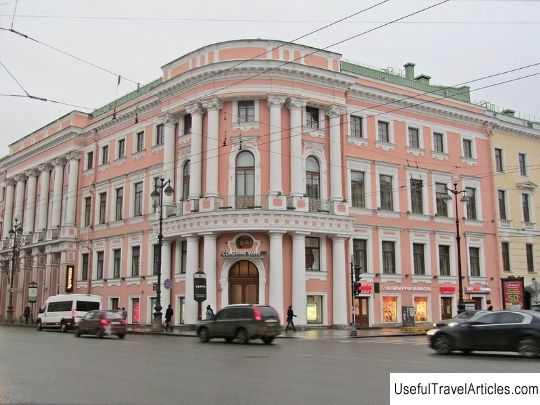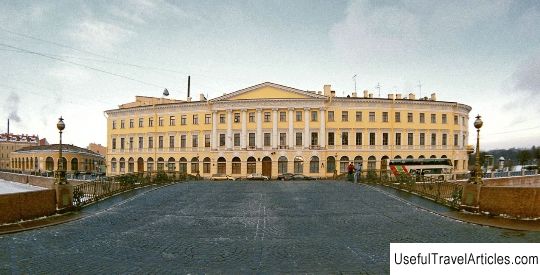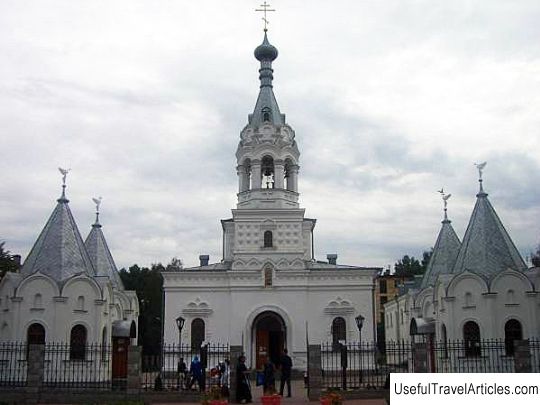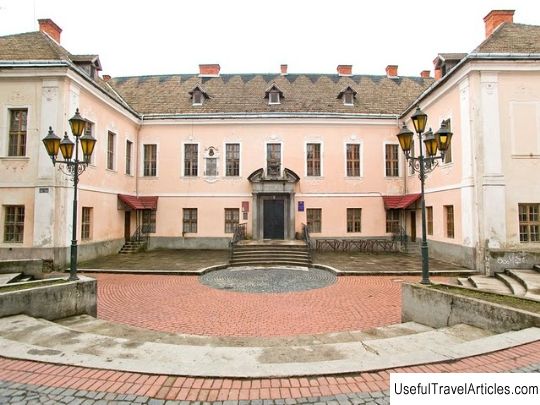Betskoy House description and photo - Russia - Saint Petersburg: Saint Petersburg
Rating: 9,8/10 (1654 votes) 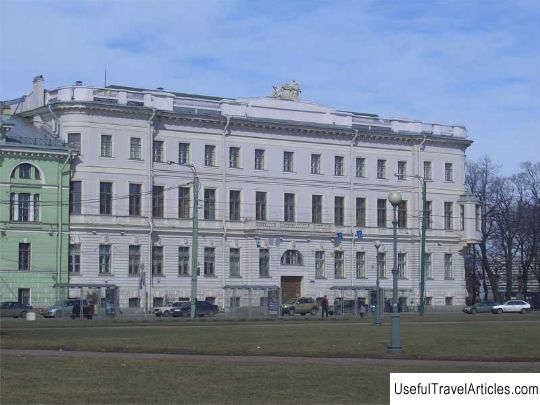
Betsky's house description and photos - Russia - Saint Petersburg: Saint Petersburg. Detailed information about the attraction. Description, photos and a map showing the nearest significant objects. Photo and descriptionThe Betskoy House is located on the Palace Embankment - an interesting monument of Russian architecture of the 18th century. It stands in the quarter between the Palace Embankment and the Field of Mars, the Summer Garden and Suvorovskaya Square. At the beginning of the 18th century, regimental barracks were located on this site. In 1725, according to Meyer's atlas, in 1725 there was a swimming pool, and in 1731 - a guardhouse. And in 1750 the architect F.B. Rastrelli, the Opera House (a two-story wooden building) was built here, which stood until 1773. Here in 1755 the first Russian opera Cephalus and Prokris was given A.P. Sumarokova. At the end of the 18th century. (1784-1787) on this place, by order of Catherine II, a house was erected for Ivan Ivanovich Betsky. The name of I.I. Betsky is known for his role in laying the foundations of education in Russia. He is the author of the reform on school education, was the director of the Land Gentry Corps, and also the president of the Academy of Arts. Betskoy A.A. raised the grand dukes Konstantin and Alexander Pavlovich. Ivan Ivanovich moved to a house on the Palace Embankment in 1789. Often the Betsky mansion was also called a palace, because with its rather modest interior decoration from the outside, it looked much richer than most residential buildings, the building also included a hanging garden. The building consisted: from the side of Tsaritsyn meadows - from a two-story building, from the side of the Neva - from a three-story building. The buildings were interconnected from the side of the Summer Garden by a covered gallery, as well as by a one-story wing. The author of the architectural design of the building is still unknown. There is a version that the building was built according to the project of Wallen-Delamot. The basis for this hypothesis is that the building facades are made in the early classical style. According to another version, the author of the project is I.E. Starov, who in 1784. was invited to the post of chief architect of the Office for the construction of houses headed by Betsky. The owner of the palace did not arrange balls and masquerades, he had a significant collection of works of art. Such famous people as Denis Diderot, the king of Poland, Stanislav-August visited this house. Evenings were held here for pupils of educational institutions subordinate to Betsky. Many premises of the mansion were rented out. In the house of Betsky in 1791-96 lived Krylov Ivan Andreevich. Here they opened a printing house, in which he published the magazines `` St. Petersburg Mercury '' and Spectator. When I.I. Betsky died, in 1795 his daughter Elena began to own the house, and in 1822 the house passed into the possession of her daughters. In 1830 the Treasury bought the Betsky house and transferred it to Prince P.G. Oldenburgsky. At the same time, the building was rebuilt by the architect V.P. Stasov. In place of the hanging gardens, a floor was added to house a dance hall. In addition, a Protestant chapel was built here. In the 1850s, another reconstruction of the mansion took place, as a result of which its height became the same on all sides. Pyotr Georgievich Oldenburgsky was famous in the educational field. He founded a school of jurisprudence, a women's gymnasium, and several public schools. The prince, as a lawyer, participated in the judicial and peasant reforms of the 1860s. Musical evenings were regularly held in the Oldenburgskys' house, and after the parades held on the Champ de Mars, the prince's colleagues and other officers gathered here. In 1917, the son of Peter Georgievich sold the house to the Provisional Government, which handed it over to the Ministry of Education. The works of art were transferred to the Hermitage. After the revolution, there were communal apartments here. Currently, the Betsky house belongs to the University of Culture. The building is connected to the Saltykovs' house, which also belongs to the university. In 1917, the son of Peter Georgievich sold the house to the Provisional Government, which transferred it to the Ministry of Education. The works of art were transferred to the Hermitage. After the revolution, there were communal apartments here. Currently, the Betsky house belongs to the University of Culture. The building is connected to the Saltykovs' house, which also belongs to the university. In 1917, the son of Peter Georgievich sold the house to the Provisional Government, which transferred it to the Ministry of Education. The works of art were transferred to the Hermitage. After the revolution, there were communal apartments here. Currently, the Betsky house belongs to the University of Culture. The building is connected to the Saltykovs' house, which also belongs to the university.         We also recommend reading Church of St. Francis (Iglesia de San Francisco) description and photos - Chile: La Serena Topic: Betskoy House description and photo - Russia - Saint Petersburg: Saint Petersburg. |
